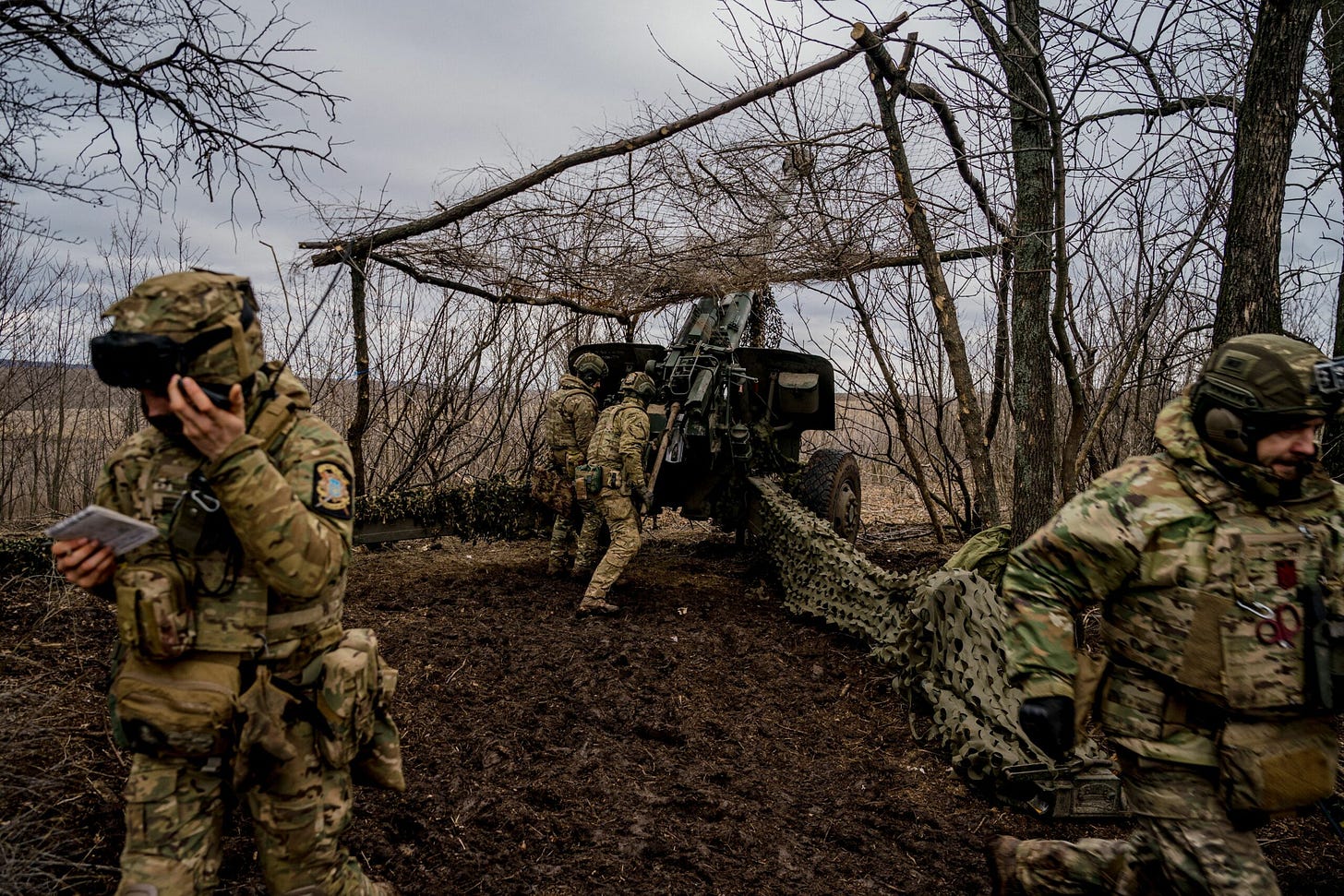Is Ukraine’s Window for Victory Closing?
Especially in light of the U.S. political calendar, the next few months may be Ukraine’s last chance for a major counteroffensive.

Slowly but surely, tension is ramping up among Ukraine’s Western allies over a counteroffensive to be launched by Kyiv this year. It’s unclear when the expected attack will begin, or where it will fall, but hopes are high that it will turn the tide of the war decisively in Ukraine’s favor.
Successful Ukrainian counterattacks in the Kharkiv and Kherson regions last year mean there is cause for optimism, and new military aid packages from the West include equipment that will be vital in a successful counteroffensive.
But as anticipation grows, nervousness is building too. Russia has had months to fortify defensive positions, and President Vladimir Putin presumably hopes that by denying Ukraine victory in 2023, he can erode Western resolve to support Kyiv as next year’s U.S. presidential election draws nearer.
But Ukraine faces the opposite strategic calculus. It can’t afford patience; it may have just one big shot at showing the value of Western military aid and proving that the war really can be won.
Speaking in Poland this week, Petr Pavel—the new Czech president and the former chairman of the NATO Military Committee—warned that a Ukrainian counteroffensive “should happen within a few months. The window of opportunity is open this year, but after next winter, it will be extremely difficult to maintain the current level of aid.”
Despite being one of the West’s most committed leaders on Ukraine and a long-term critic of Russian influence in Europe, Pavel warns of “fatigue in the countries that are providing aid” if Ukraine can’t make significant gains in 2023. “I think that Ukraine will only have one attempt to carry out a major counteroffensive. If it carries out a major counteroffensive and it fails, it will be extremely difficult to obtain funds for the next one,” Pavel said.
The immensity of the task facing Ukraine’s military command can’t be overstated. An ineffectual counterattack leading to the destruction of donated Western military equipment and little to show in return would be a political calamity, making allied politicians and Western voters question the value of further support.
Ukraine’s ability to keep fighting depends entirely on Western political developments that are out of its control. This has been alarmingly shown by the growing skepticism in some quarters of the Republican party about the need to keep up U.S. military support. The frontrunners for the GOP presidential nomination, Donald Trump and Ron DeSantis, have both criticized the supplying of Ukraine, and a failed counteroffensive would only make it easier for the other Republicans who now support Ukraine to flip on the issue as the presidential primaries progress.
A failed counteroffensive would also raise immediate practical concerns for the Ukrainians, because much of the military equipment that has already been donated to Ukraine is not easily replaceable.
When the Slovak government announced last week that it would send its mothballed fleet of MiG-29 fighter jets to Ukraine, the nation’s president Zuzana Čaputová said the move exhausts the country’s available military stocks for Ukraine. Other key suppliers of the kinds of Soviet-era equipment with which Ukrainians are familiar have also sent everything they can. With every piece of donated equipment so valuable, Ukraine must exercise caution; it’s expected that Slovakia’s planes will be flown primarily in protective operations to stop them being shot out of the sky.
And the West’s economic room for maneuver against Russia is limited as well. Senior Czech officials admit privately that major additional measures to starve Russia’s economy are unlikely, because certain EU countries remain too dependent on cooperation with Moscow.
With the parameters of the military and economic struggle in the coming months already seemingly fixed, some of the fiercest debates on the war now look immaterial. The contentious issue of supplying modern Western fighter jets, for example, is a red herring, at least as far as this year’s crucial fighting is concerned. Czech President Pavel points out that given the training and maintenance procedures required, such planes wouldn’t be operational in Ukraine until 2024 even if deliveries were agreed upon today.
The debate over modern planes has been the clearest example of how Western hesitancy could end up damaging Ukraine’s counteroffensive. In order to influence the crucial phase of fighting this year, an agreement on Western jets would have been needed months ago. Instead, futile arguments only distracted from more practical steps, such as the deliveries of Soviet-era aircraft that are only now taking place.
It’s the same story with battle tanks and ammunition. American and European partners are taking steps now that they should have taken months ago, given the all-important nature of this year’s long-awaited counteroffensive, and the time needed to produce, transport, and integrate new weapons systems. As Ukraine desperately calls for more ammunition, arms manufacturers are still waiting for the orders that they need to ramp up production.
Allies say they are with Ukraine for “as long as it takes.” But the longer the war goes on without significant Ukrainian gains, the more politically contentious military support will become. The stance of leading Republicans is just one example of how Western democratic processes could, sooner or later, derail Ukraine’s war effort. Kyiv can’t afford a never-ending war, so it urgently needs to answer critics of military aid with a resounding success in the months to come.



